CHARLESTON – The following events happened on these dates in West Virginia history. To read more, go to e-WV: The West Virginia Encyclopedia at www.wvencyclopedia.org.
May 9, 1800: Abolitionist John Brown was born in Torrington, Connecticut. His October 16, 1859 raid on on the U.S. arsenal at Harpers Ferry galvanized the nation, further alienating the North and South and drastically reducing any possible middle ground for compromise. His hoped for slave uprising never materialized, and Brown’s men soon were besieged by local militia and U.S. marines under the leadership of Col. Robert E. Lee. After a last stand in a small fire-engine house, Brown and his surviving followers surrendered. John Brown was tried for murder, treason, and insurrection in the Jefferson County courthouse at Charles Town, convicted November 2, 1859, and hanged there a month later.
May 9, 1843: Confederate spy ‘‘Belle’’ Boyd was born in Martinsburg. On July 4, 1861, Belle shot a Yankee soldier and started her spy career. After being acquitted in the soldier’s death, she carried news of Union plans to Confederate Gen. Stonewall Jackson during Jackson’s successful 1862 Shenandoah Valley campaign. Boyd wrote a book, Belle Boyd in Camp and Prison, while she was in London in 1865. It was republished many times. She made a living for her family as an actress. She died in Kilbourn, Wisconsin, where she is buried. Boyd’s childhood house at 126 East Race Street in Martinsburg and the cottage in Front Royal, Virginia, are now museums.
May 9, 1863: Confederate raiders arrived at Burning Springs, Wirt County. There they set fire to 150,000 barrels of oil, oil tanks, engines for pumping, engine houses, wagons, and oil-laden boats. The boats exploded, sending burning oil down the Little Kanawha River until the stream became a sheet of flame with massive clouds of dense, jet-black smoke filling the air. In his report to Gen. Robert E. Lee, Jones perhaps overestimated the amount of oil burned at 150,000 barrels, describing the fiery sight as a ‘‘scene of magnificence that might well carry joy to every patriotic heart.’’ The Confederate raiders returned to their camp in Rockingham County, Virginia, having largely accomplished their mission. Their combined forces lost 12 killed, 45 wounded, and 26 captured. Federal casualties were estimated at 25 killed, 75 wounded, and 700 taken prisoner.
May 10, 1863: Stonewall Jackson died after uttering the words: ‘‘Let us cross over the river and rest under the shade of the trees.’’ He is buried in the Stonewall Jackson Cemetery in Lexington, Virginia. In 1842, Jackson entered the U.S. Military Academy at West Point. He firmly believed that ‘‘you may be whatever you will resolve to be.’’ Such resolution enabled him to graduate a surprising 17th in a class of 59 cadets. When Virginia left the Union in 1861, Jackson dutifully went with his native state. In the opening battle at Manassas on July 21, 1861, he and his brigade won the name ‘‘Stonewall’’ for steadfastness at the critical point in the engagement. The brilliant career ended in May 1863, at Chancellorsville. Having used his favorite tools—secrecy, swift marching, a sudden and heavy attack where least expected—Jackson was accidentally shot by his own troops in the chaos of battle. The amputation of his left arm led to pneumonia.
May 10, 1908: The first official observance of Mother’s Day was held at Andrews Methodist Episcopal Church in Grafton and simultaneously in Philadelphia. The holiday resulted from a vigorous campaign by Anna Jarvis who wanted to commemorate the spirit of her mother’s work as a social activist. A day honoring mothers had been the dream of Jarvis’s mother, Anna Reeves Jarvis, who formed Mothers’ Day Work Clubs to combat child mortality. She insisted that every mother in Taylor County belong to one. The clubs bought medicine, inspected milk and water supplies, and learned about health and sanitation from physicians. Members had to swear not to allow political divisions within their organizations during the Civil War. In 1868, Anna Maria Jarvis organized Mothers’ Friendship Day celebrations to squelch festering resentments from the war years. A bill to establish a national Mother’s Day was introduced in the U.S. Senate May 9, 1908, but failed to pass. Ministers, temperance groups, and women’s suffragists soon convinced 45 states to establish the holiday, and President Woodrow Wilson proclaimed the first national Mother’s Day on May 10, 1914. Jarvis deplored the commercialization of the holiday that quickly followed.
May 10, 1960: John F. Kennedy defeated Hubert Humphrey in the West Virginia primary. It dispelled the widely held belief that being a Roman Catholic was a crippling handicap for a presidential candidate. In the spring of 1960, the state of West Virginia was a relevant political force for perhaps the first time in the state’s 97-year history at the time as U.S. Senator John F. Kennedy, the junior senator from Massachusetts, three term U.S. Senator Hubert H. Humphrey, D-Minn., and “the senator’s senator,” U.S. Senator Lyndon B. Johnson, D-Texas were in a three-way race. Kennedy’s May 9, 1959 visit to Welch coincided with Truman’s birthday. The second visit that year was to Wheeling and Wellsburg on Oct. 10, 1959 — a visit that ultimately ended in Charleston where Kennedy attended a Democratic Party fundraiser. While the state was solidly Democratic, the conservative nature of Mountain State voters provided the Kennedy camp with a test case for his southern electability even though West Virginia was perhaps not as rigid as other southern states.
May 11, 1909: Filmmaker Ellis Dungan was born. After years of working in the feature film industry in India, He spent the next 15 years as cameraman, editor, director, and production person in the prolific Indian film industry, working on feature films, documentaries, and World War II training films for the British government. Dungan came home to the Ohio Valley in 1958, settling in Wheeling. During the next 30 years his Ellis Dungan Productions shot documentary films for Hollywood producer Duke Goldstone and produced many films for the state and region, including Wheels to Progress (1959) and For Liberty and Union (1977), about the creation of the state of West Virginia. He was honored with a Lifetime Achievement Award by the West Virginia International Film Festival in 1989 and inducted into the Wheeling Hall of Fame in 1994.
May 11, 1930: Physician John C. Norman, Jr. was born in Charleston. A noted thoracic and cardiovascular surgeon and researcher, he was best known for his work toward creating an artificial heart. Norman was an assistant professor of surgery at Harvard and joined the surgical team at Boston City Hospital in 1964. He became involved in medical research projects concerning organ transplants. While in Boston, Norman began research into a left ventricular assist device, a battery-operated pump for heart patients. He left Boston for Houston in 1972, establishing the Cardiovascular Surgical Research Laboratories at the Texas Heart Institute. For the next several years, he worked on the development of the first abdominal left ventricular assist device, which could be transplanted temporarily in patients who suffered cardiac failure after open-heart surgery.
May 12–14, 1921: Bullets peppered down on about a dozen mining towns in the Matewan-Williamson area, and nonunion miners fired back, in what became known as the Battle of the Tug. Three people were shot and killed. Deputy sheriffs, mine guards, the recently created West Virginia State Police, and Kentucky National Guardsmen joined the fray. Thousands of shots were fired from rifles, pistols, and even machine guns. Bullets clipped telephone wires and ripped through homes as families cowered in fear. Bridges and tipples were dynamited. Businesses and schools closed. Three persons were shot and killed. he Battle of the Tug ended on May 15 when State Police arranged a truce, with the aid of a physician who crawled under fire through the Kentucky mountains to make contact with the insurgents. During the fighting, Governor Ephraim Franklin Morgan asked President Harding to send federal troops ‘‘to prevent wanton slaughter of innocent citizens.’’ Although Morgan’s request was denied, it set the stage for sending federal troops into West Virginia in September to quell the Miners’ March on Mingo and Logan.
May 13, 1962: Editorial cartoonist Henry Payne was born in Charleston. In 1989, Payne was the first editorial cartoonist in the country to make his work available via computer. Payne, a self-described conservative, left West Virginia in 1986 to join Scripps Howard News Service in Washington, where he also served as editor of a cartoon wire service. He began syndication in 1987 with United Feature Syndicate, which distributes his cartoons to more than 60 newspapers worldwide. In addition to his artistic skills, Payne has written articles about economic, consumer, and environmental issues that have appeared in various publication. Payne was a runner-up for the Pulitzer Prize in 1986 and the Mencken Award in 1992. He published his first book, Payne & Ink: The Cartoons and Commentary of Henry Payne, 2000–2001, in 2002 and illustrated two children’s books published by Random House.
May 14, 1878: Photographer Rufus “Red” Ribble was born in Blacksburg, Virginia. For nearly 40 years, he traveled Fayette, Raleigh, Kanawha, Wyoming, Boone, and Nicholas counties in West Virginia to photograph coal miners, coal towns, family reunions, club events, church congregations, and school groups. Ribble produced large panoramic pictures by using a wide-format Cirkut camera. The camera revolves on a geared tripod while exposing the film, making it capable of taking a continuous photograph that can capture a full 360-degree view. The finished photograph, as printed by Ribble, was eight inches high and up to four feet long. By 1919, Ribble had moved to the small community of Prince on the New River in Fayette County. Relocating to Mount Hope by 1920, he continued to record images of southern West Virginia until late 1957. It is estimated that he produced more than 600 such photographs during his career. Even today these negatives, some of which are more than 75 years old, produce a clear view of the coalfields as they appeared to the eyes of the photographer.
May 14, 1906: Social reformer Mary Behner was born in Xenia, Ohio. From 1928 until 1937, Behner worked in the coal camps along Scotts Run, where once prosperous mining operations had fallen victim to the depressed coal market of the late 1920s. Thousands of families, including numerous immigrants and African-Americans, were stranded by changing economic tides.Behner was shocked by the poverty she encountered, but she was not easily daunted. Armed with an iron will and abiding faith, Behner comforted mothers whose babies had died for want of milk, castigated coal operators for ignoring their workers’ needs, and created educational and social outlets for young people. Her most visible contribution to Scotts Run was ‘‘The Shack,’’ a former company store that Behner converted into a community center. Chief among her interests were programs that assisted children in need and those that fostered an appreciation for different cultures.
May 14, 1943: Alan Mollohan was born in Fairmont. Mollohan served in the U.S. Congress from 1982 to 2010. A congressman’s son who served longer than his father in the U.S. House of Representatives, Mollohan became the top Democrat on the Appropriations subcommittee that funds the Department of Veterans Affairs and the Department of Housing and Urban Development, as well as several independent agencies, including the National Aeronautics and Space Administration, the Environmental Protection Agency, and the National Science Foundation. Mollohan was instrumental in the creation of the West Virginia High Technology Consortium Foundation, the Institute for Scientific Research, the Mid-Atlantic Aerospace Complex, and the Canaan Valley Institute.
May 15, 1880: The state’s first telephone exchange was placed in service in Wheeling with about 25 subscribers. At first they could make only local calls, but long-distance service was started between Wheeling and Pittsburgh in 1883.
May 15, 1886: Minnie Buckingham Harper was born in Winfield. She was the first African-American woman to serve as a member of a state legislative body in the United States. She was appointed by Governor Howard Gore on January 10, 1928, to fill the unexpired term of her husband, E. Howard Harper. A homemaker and a resident of Keystone, Mrs. Harper had received the unanimous recommendation of the McDowell County Republican Executive Committee to fill her husband’s position. Her appointment reflected both the growing role of women in American politics and the maturation of an African-American political coalition in southern West Virginia, which by the 1920s, had become an important part of the party structure of the state. Harper served less than a term in the House of Delegates, declining to run for the office in the next election.
May 15, 1893: Albert Sidney ‘‘Sid’’ Hatfield, controversial police chief of Matewan and martyred hero to union coal miners, was born near Matewan, on the Kentucky side of Tug Fork. He worked in area coal mines until Mayor C. C. Testerman named him Matewan’s police chief in 1919. In that position, Hatfield in early 1920 assisted a United Mine Workers campaign to organize Tug Fork miners. On May 19, when Baldwin-Felts detectives evicted several miners from their homes near Matewan because they had joined the union, Hatfield and a crowd of angry miners confronted the detectives. The "Matewan Massacre" resulted, a shoot-out in which seven detectives, two miners, and Mayor Testerman were killed. Hatfield survived unharmed and instantly became a miners’ hero.
May 15, 1953: George Brett, the Hall of Fame third baseman for the Kansas City Royals, was born in Glen Dale in Marshall County. Over the course of his 21-year career, he had 3,154 hits, despite being plagued by injuries for several seasons. Considered to have one the best left-handed swings in baseball, he finished his career with a .305 average. His best individual season was in 1980 when he won the batting championship with a .390 average. He is one of only four players in baseball history to accumulate 3,000 hits, 300 home runs and a career batting average of .300. Brett was involved in the memorable “Pine-Tar Bat Incident.” Baseball players use pine tar to get a better grip, and the rule, seldom enforced, allows for up to 18 inches of pine tar on the bat from the knob up. After Brett hit a home run against New York, Yankee manager Billy Martin asked the umpires to measure the amount of pine tar on the bat. Brett’s bat had more than allowed, and the umpire signaled Brett out, which gave the win to the Yankees. Brett stormed from the dugout and was ejected from the game. The footage of Brett waving his arms and screaming at the umpire is classic baseball lore.
e-WV: The West Virginia Encyclopedia is a project of the West Virginia Humanities Council. For more information, contact the West Virginia Humanities Council, 1310 Kanawha Blvd. E., Charleston, WV 25301; (304) 346-8500; or visit e-WV at www.wvencyclopedia.org.






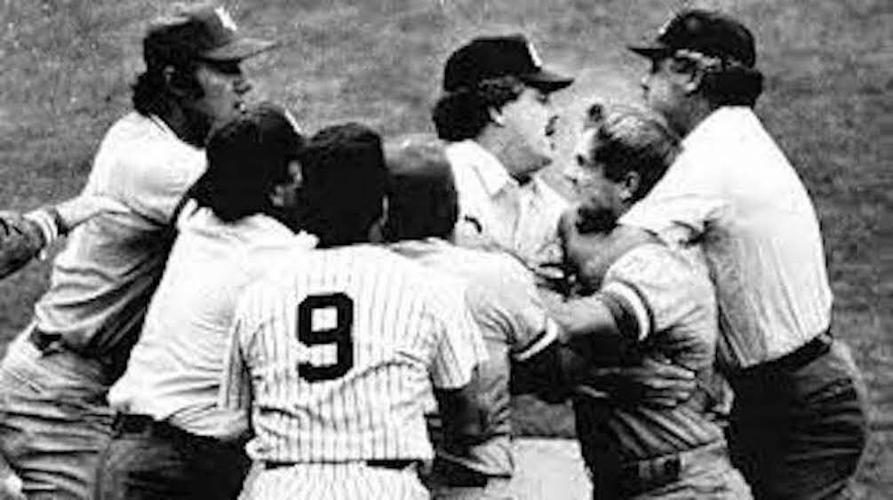
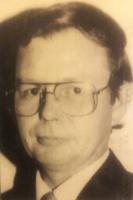

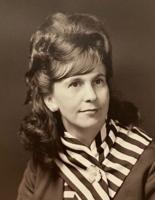

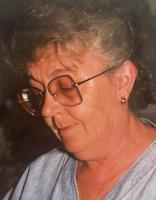

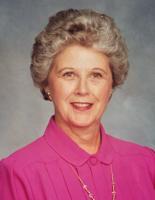
Commented
Sorry, there are no recent results for popular commented articles.